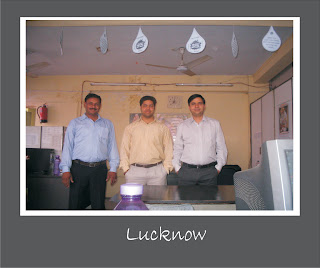We at Ion Exchange (India) Ltd. have taken a pledge to make Green Living our way of life & to take corrective measures to protect the environment and make this world a better place to live in. This blog showcases our efforts to spread environmental responsibility. We would also like to encourage our readers to spread this message of conservation & help us achieve the planet’s collective goal.
Tuesday, December 20, 2011
Thursday, December 1, 2011
Tuesday, June 28, 2011
Friday, June 24, 2011
Saturday, June 18, 2011
Thursday, June 16, 2011
Friday, June 3, 2011
Friday, May 6, 2011
Friday, March 25, 2011
Ready, Set, OFF !
This Saturday, March 26, more than 6,000 cities across the world will turn off their lights for one hour at 8.30 pm to mark Earth Hour.
Though representative, Earth Hour can contribute much to reducing our carbon footprint. It is a good initiative to spread awareness about how our lifestyles and energy consumption patterns affect global dynamics and to introduce us to the importance of considering alternate renewable energy resources like solar or wind energy.
In India
Mumbaikars small step is a big leap for mankind!
Earth Hour gained prominence in Mumbai in 2009. The campaign at present has the support of several corporate houses and buildings, including the Nokia Tower, Air India Building, ITC Maratha, Trident Hotel, Standard Chartered Bank and HSBC Bank. Other landmarks where the lights will be switched off are the Gateway, CST administrative building and Bandra-Worli Sea Link.
Schools and higher education institutes, too, have pledged support to the movement, prominent among them being
23 MW saved in the city during Earth Hour 2009, ensured a three-hour power supply to 25,000 households outside the city. (Nationally, the energy saved was 1,150 MW in 2009 and 900 MW in 2010).
Thursday, March 10, 2011
Friday, February 4, 2011
Tuesday, January 25, 2011
Friday, January 14, 2011
Greenprint for Construction
Green or eco-architecture and construction are all about proactively protecting the environment.
The construction industry is booming again – and we need to be mindful of the significant energy and environmental impact of large scale construction. Hopefully, growing environmental consciousness coupled with regulatory norms may see a green building movement gaining major momentum.
Energy efficiency and savings can be successfully obtained through solar heating, maximising natural lighting and cross ventilation; minimising heat ingress by use of cavity walls and double glazing insulation; use of wind/solar energy for lighting and of energy saving air conditioning; harnessing heat generated by air conditioners; employing ozone-free equipment and technologies that reduce greenhouse gas emissions.
Apart from these energy saving measures , green features include rain water harvesting and zero water discharge through waste water, sullage and sewage recycle; water efficient and water saving fixtures like waterless urinals, sensor driven taps, aerators and dual flushes. Other green initiatives are recycle of construction waste, eschewing toxic paints and sealants, use of local and earth friendly materials and of renewable resources as material; avoidance of “over building”, and integrating construction into the local landscape and environment.
Many examples of eco-friendly construction in our country demonstrate that green buildings are possible and feasible. The CII-Godrej Green Building Centre in Hyderabad is the first platinum rated building outside USA India
Subscribe to:
Comments (Atom)


















